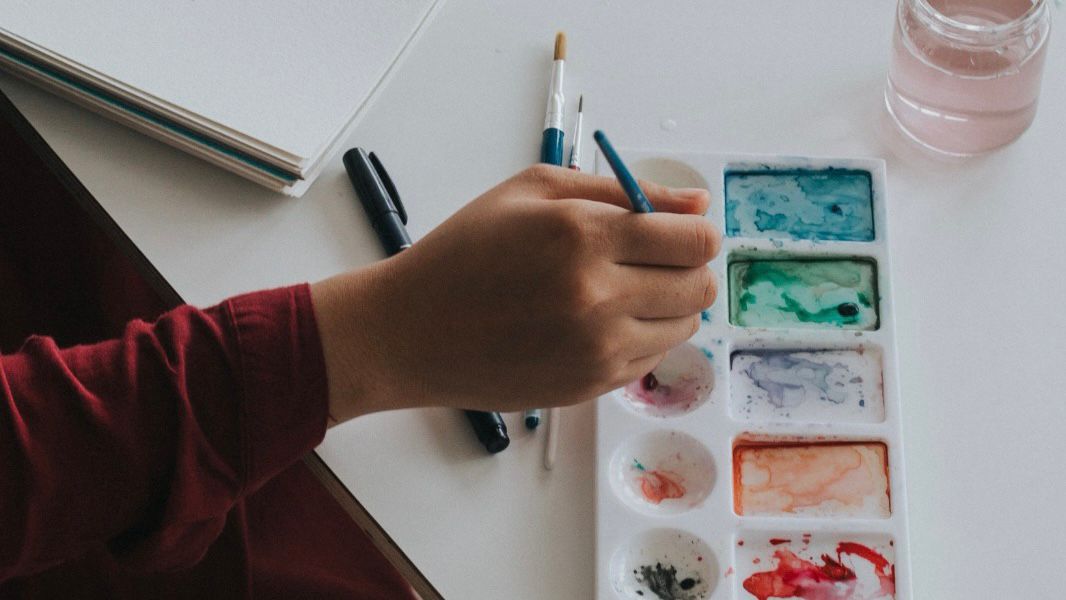
Mastering the Art: How to Paint Like a Pro
Painting is a beautiful form of self-expression that allows you to create art and capture emotions on a canvas. Whether you’re a beginner or have some experience, mastering the art of painting requires dedication, practice, and a willingness to explore your creativity. This article will provide you with ten essential tips to help you paint like a pro and elevate your artistic skills to new heights.

Tip 1: Invest in Quality Materials
To paint like a pro, it’s crucial to invest in quality materials. Choose artist-grade paints, brushes, and canvases that offer superior performance and longevity. Quality materials will enhance the appearance and durability of your artwork, allowing you to work with confidence and achieve professional-looking results.
When it comes to paintbrushes, experiment with different sizes and shapes to understand their effects on your strokes. Additionally, explore different types of canvases, such as stretched, primed, or textured, to find the surface that suits your artistic style.
Tip 2: Learn the Basics of Color Theory
Color theory forms the foundation of painting. Familiarize yourself with the color wheel and its relationships, such as complementary, analogous, and triadic colors. Understand how to mix primary colors to create secondary and tertiary colors. By mastering color theory, you can create harmonious and visually striking compositions that captivate viewers.
Experiment with different color combinations and observe their effects on mood, depth, and visual impact. Develop an understanding of warm and cool colors and how they can evoke specific emotions in your artwork. Remember, a strong grasp of color theory will significantly enhance your ability to paint like a professional.
Tip 3: Practice Brush Control and Techniques
Mastering brush control and various painting techniques is essential for achieving professional-looking results. Experiment with different brush strokes, such as washes, glazes, dry brushing, and impasto, to add depth, texture, and dimension to your artwork. Understand how pressure, angle, and brush loading affect the marks you create on the canvas.
Practice using both thick and thin paint layers to create different effects and explore the interplay between transparency and opacity. Refine your brush control by experimenting with different brushes and their bristle types. Through regular practice and experimentation, you’ll gain the skills and confidence needed to paint like a pro.
Tip 4: Study Composition and Design Principles
Composition plays a vital role in creating visually captivating artwork. Study design principles such as balance, focal point, rule of thirds, and negative space. Learn how to create a sense of harmony, movement, and visual interest in your paintings.
Consider the placement of elements within your composition and how they interact with each other. Experiment with different cropping and framing techniques to guide the viewer’s eye and create a compelling narrative within your artwork. A solid understanding of composition and design principles will elevate your paintings to a professional level.
Tip 5: Develop Observation Skills
Observation is a fundamental skill for any artist. Train yourself to see the world with a discerning eye, paying attention to shapes, values, textures, and colors in your surroundings. Practice sketching from life to enhance your ability to capture accurate proportions and details.
Train yourself to analyze light and shadow, understanding how they define form and create depth. Observe how colors change in different lighting conditions and learn to accurately reproduce those changes on your canvas. Developing strong observation skills will enable you to infuse your paintings with a sense of realism and authenticity.
Tip 6: Experiment with Different Styles and Subjects
To paint like a pro, it’s essential to explore different styles and subjects. Step out of your comfort zone and experiment with various genres, whether it’s landscapes, portraits, still life, abstract, or any other genre that interests you. Embrace the challenges and opportunities each subject presents, as they will help you grow as an artist.
Experimenting with different styles allows you to develop a unique artistic voice while expanding your technical skills. It broadens your understanding of composition, color, and brushwork. Don’t be afraid to take risks and push the boundaries of your creativity. Through experimentation, you’ll discover what resonates with you and refine your personal style.
Tip 7: Practice Patience and Perseverance
Becoming a proficient painter takes time and dedication. Practice patience and persevere through the ups and downs of your artistic journey. Accept that not every painting will be a masterpiece and view setbacks as learning opportunities.
Set realistic goals and break them down into manageable steps. Dedicate regular time to practice and hone your skills. Celebrate your progress along the way, no matter how small, and remember that every stroke brings you closer to painting like a pro.
Tip 8: Seek Feedback and Learn from Others
Seeking feedback from fellow artists, mentors, or art communities can provide valuable insights and perspectives on your work. Participate in critiques, workshops, or online forums to receive constructive criticism that can help you refine your technique and approach.
Learn from other artists by studying their work, attending exhibitions, or taking art classes. Observe how they handle different aspects of painting, such as brushwork, color, and composition. Emulate techniques that resonate with you while still maintaining your unique artistic voice.
Tip 9: Embrace Mistakes and Learn from Them
Mistakes are an inevitable part of the artistic process. Instead of becoming discouraged, embrace them as opportunities for growth and learning. Analyze your mistakes to understand what went wrong and how you can improve.
Keep a sketchbook or journal to document your artistic journey and reflect on your progress. Experiment with different solutions to rectify mistakes or turn them into creative opportunities. Remember, some of the greatest artistic breakthroughs come from embracing and learning from mistakes.
Tip 10: Trust Your Intuition and Enjoy the Process
While learning the technical aspects of painting is crucial, it’s equally important to trust your intuition and enjoy the creative process. Allow your instincts to guide your artistic decisions and embrace the freedom to experiment and take risks. Don’t be afraid to deviate from the rules and explore unconventional approaches. The joy and passion you bring to your work will shine through your paintings and connect with viewers on a deeper level.
Painting like a pro requires dedication, practice, and a willingness to continuously learn and grow. By following these ten tips, investing in quality materials, understanding color theory, practicing brush control, studying composition, developing observation skills, experimenting with styles and subjects, practicing patience and perseverance, seeking feedback, embracing mistakes, and trusting your intuition, you’ll be well on your way to mastering the art of painting and creating professional-level artwork that reflects your unique artistic voice.












